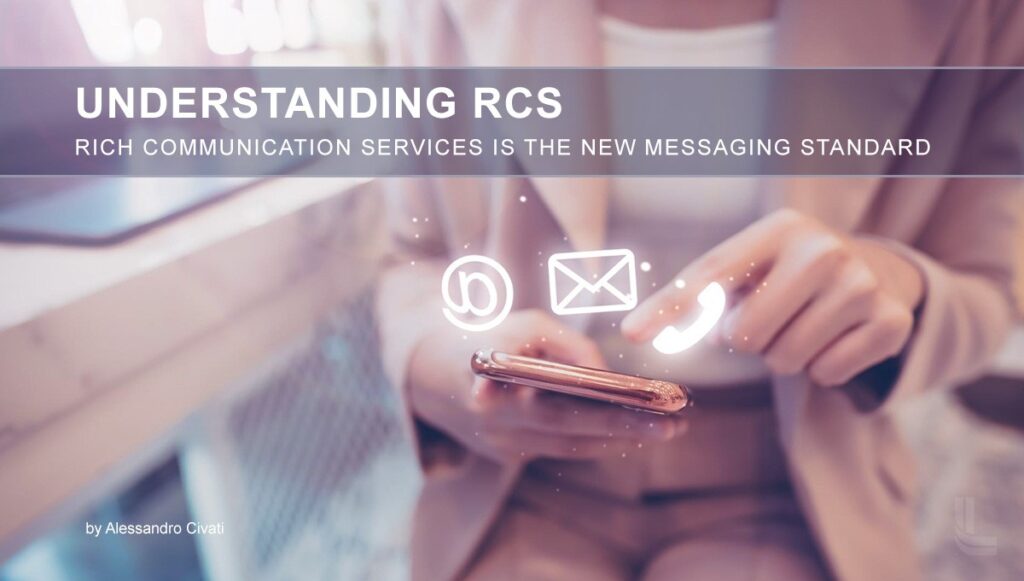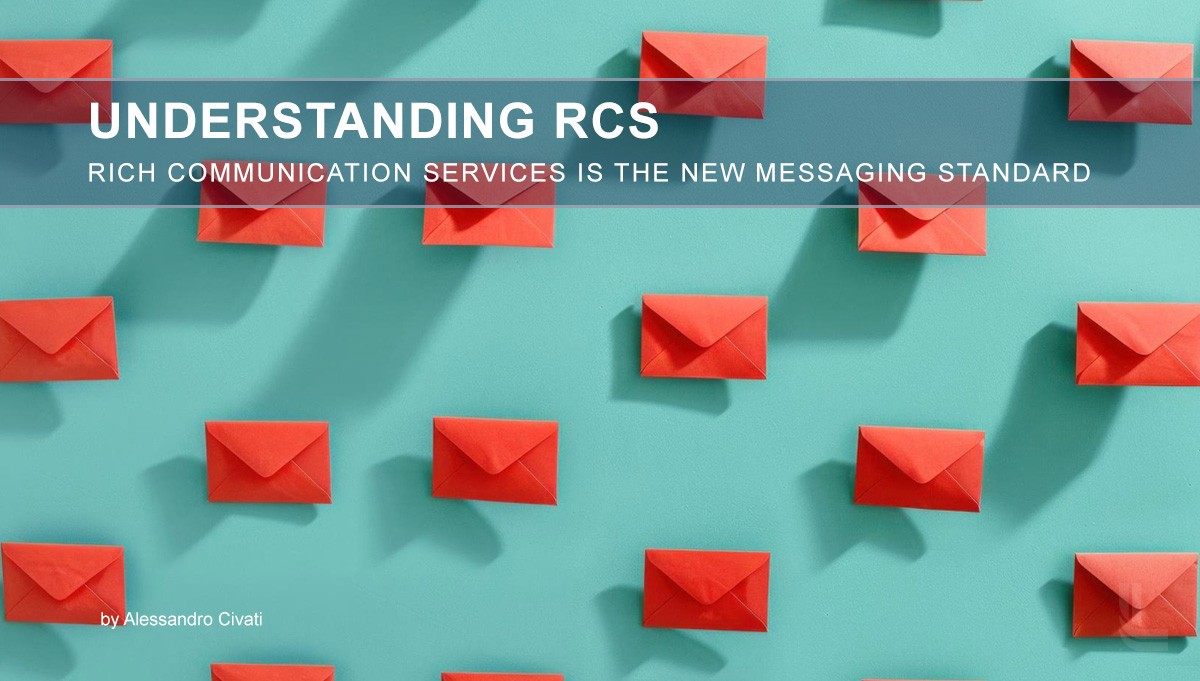If you’ve been keeping up with all the news from WWDC 2024 this week, you’ll know that Apple is bringing the RCS (Rich Communication Services) messaging standard to iPhones later this year with iOS 18. This is a win for Google, which has long supported RCS on Android.
“WWDC 2024 refers to the Worldwide Developers Conference held by Apple. WWDC is an annual event where Apple showcases its latest software developments and technologies to developers and the public. At WWDC, Apple typically announces updates to its operating systems, such as iOS, macOS, watchOS, and tvOS, and often introduces new features, tools, and products. The conference includes keynote presentations, technical sessions, hands-on labs, and networking opportunities for developers to learn about and get early access to the latest advancements in Apple’s software ecosystem.“
But what exactly is RCS, and why does supporting it matter? The short version: It’s an upgrade on the standard SMS/MMS texting protocols that smartphones have used from the start. It offers better support for modern messaging features like read receipts and image sharing, along with added security layers.
RCS is similar to using Apple’s iMessage or WhatsApp—though it’s not quite that simple. There’s no specific RCS app to install, but apps that support the RCS standard exist, as we’ll explain.
The long version: Rich Communication Services is a fundamental standard rather than an app like WhatsApp, Signal, or Telegram. It requires carrier support to function, which initially slowed its adoption. However, RCS now works across most countries and is supported by AT&T, Verizon, and T-Mobile.
SMS (Short Message Service) and MMS (Multimedia Messaging Service) weren’t designed for the modern communication needs of smartphones. RCS addresses this by improving or adding support for high-resolution images and video sharing, group chats, read receipts, video calls, and messages longer than 160 characters.
When RCS is supported in your phone’s default texting app, you can add reactions to messages, see when someone else is typing, and include elements like GIFs, stickers, and your current location in conversations—all features that are standard in other messaging apps. RCS also brings behind-the-scenes upgrades. Unlike SMS/MMS, which requires a cellular data connection, RCS works over both cell networks and Wi-Fi. This means if you don’t have a cell signal but can connect to Wi-Fi, your message can still go through.
The standard also includes end-to-end encryption, ensuring that no one—not even Google or your carrier—can see the conversation except the devices involved. End-to-end encryption is a critical security feature for any app handling sensitive information, including communications.
This upgrade is why Google Messages and Samsung Messages now support it—the default messaging apps on Pixel and Galaxy phones, respectively. In November 2023, Apple finally agreed to support RCS on the iPhone in 2024, though this decision may have been influenced more by antitrust concerns than a desire to align with Google.
I report here some technical details about RCS:
### Key Features
1 – Enhanced Messaging:
- Text Messages: Longer messages without the 160-character limit of SMS.
- Multimedia Support: High-resolution images, videos, and audio messages.
- Group Chats: Create and manage group conversations.
2 – Read Receipts and Typing Indicators:
- Read Receipts: Notifies the sender when the recipient has read a message.
- Typing Indicators: Shows when someone is typing a reply.
3 – File Transfer:
- Large Files: Supports sharing larger files compared to SMS/MMS.
4 – Location Sharing:
- Real-time Location: Share the current location or a point of interest.
5 – Rich Cards:
- Interactive Content: Cards with images, videos, and buttons for actions like booking a flight or making a purchase.
6 – Security:
- End-to-End Encryption: Ensures that only the communicating users can read the messages, not even the service providers or carriers.
### Technical Architecture
1 – Client-Server Model: RCS operates using a client-server architecture where the messaging client on the user’s device communicates with an RCS server managed by the carrier or a service provider.
2 – IMS Integration – IP Multimedia Subsystem (IMS): RCS leverages the IMS core network architecture used in modern LTE and 5G networks, ensuring compatibility with existing telecommunication infrastructures.
3 – Universal Profile – GSMA Universal Profile: A set of standards developed by the GSM Association (GSMA) to ensure interoperability between different carriers and devices. This profile includes specifications for messaging, file sharing, and more.
4 – Transport Protocols:
- SIP (Session Initiation Protocol): Used for establishing and managing communication sessions.
- HTTP/HTTPS: Often used for media upload and download.
- MSRP (Message Session Relay Protocol): Handles instant messaging and file transfer within the IMS framework.
### Deployment
1 – Carrier Support:
- Adoption: Requires support from mobile carriers, who must deploy RCS servers and integrate them with their networks.
- Global Reach: Major carriers worldwide, including AT&T, Verizon, T-Mobile, and many others, support RCS.
2 – Device Compatibility:
- Native Support: Many modern smartphones have built-in support for RCS within their default messaging apps (e.g., Google Messages for Android, Samsung Messages).
- Cross-Platform: Works across different devices and operating systems, provided they support the RCS protocol.
### Benefits Over SMS/MMS
1 – Improved User Experience: More interactive and feature-rich communication compared to traditional SMS/MMS.
2 – Network Efficiency: Utilizes data networks (LTE, Wi-Fi) rather than the more limited SMS/MMS channels.
3 – Future Proofing: Designed to work seamlessly with evolving telecommunication technologies like 5G.
iPhone RCS support will arrive in September with iOS 18. This means all the features we’ve mentioned—from read receipts to message reactions—will be available in the iOS Messages app. However, Android users will still appear as green bubbles, as RCS won’t be fully integrated with Apple’s iMessage platform.
When texting someone with RCS enabled, “Text Message RCS” will appear in the text input box in Messages on iOS, indicating that the recipient can use all the modern messaging features. RCS is automatically enabled if you’re chatting with a contact who has a device that supports it.
With iOS 18 still in development, there may be changes in how RCS is handled on iPhones before the software is rolled out to all compatible devices later this year. iOS 18 will work on any iPhone model launched in 2018 or later, so most Apple handsets currently in use will get the software and RCS.
It’s similar to Samsung Messages: RCS is automatically enabled when available. Google Messages for Android offers the most control over RCS settings, accessible from the app by tapping your profile picture (top right), and then selecting Messages settings. Choose RCS chats to turn features like read receipts and typing indicators on or off.
Based on this analysis RCS is positioned as the next-generation messaging standard, aiming to unify the messaging experience across different devices and networks while providing a rich and secure communication environment.
With RCS soon to appear on iPhones and already widely supported on Android devices, the need for phones to revert to SMS will diminish—though it will still happen if RCS isn’t available. The standard that has powered our text messages since 1992 can finally enjoy a well-earned retirement.
Author: Alessandro Civati.
👉👉 Intellectual Property Protected by LutinX Blockchain 👈👈


